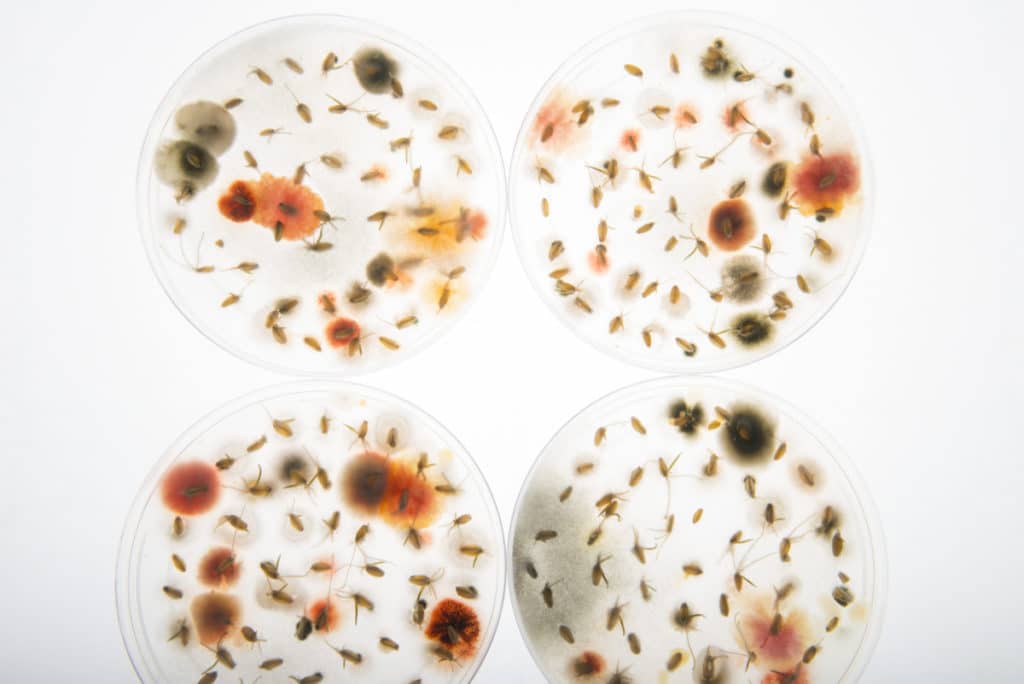Alberta’s decision to remove Fusarium graminearum as a regulated pest has put the pathogen back in the news. Here’s why it’s more crucial than ever to think about testing.
In case you missed it, a quick news recap: earlier this year the Alberta government removed Fusarium graminearum from the list of pests covered by the Pest and Nuisance Control Regulation, which is part of the province’s Agricultural Pests Act.
Fusarium is a fungal disease of cereal crops that affects grain development and quality. It causes fusarium head blight, a serious fungal disease that affects wheat, barley, oats and corn. It has been present in Alberta at very low levels since 1989. Removing it from the regulation will allow Alberta to modernize in order to manage the disease, rather than having zero tolerance for it.
What does this mean for Alberta and the country at large?
More than ever, growers are in the driver’s seat when it comes to fusarium control. Governments are increasingly getting out of regulating pests like fusarium, meaning that you no longer are required by law to test for it. At first glance that might sound like a bad thing, but on the flip side, it means you have full control over how you choose to manage the pathogen.
The COVID-19 pandemic has shown us how important it is to manage our approach to our health and the health of those around us. We can choose to distance ourselves physically from others and to wear a mask. We can choose to get tested if we have symptoms or even before then, if we fear we may have been exposed and want a test to tell us whether or not we have the virus.
The same goes for fusarium. Testing is a good thing and can be used in a variety of ways to ensure you keep fusarium levels under control if you are susceptible.
Working with a professional, reliable testing provider helps you to figure out your options and begin developing a tailor-made management plan built just for you. There are many ways to test seed health in the laboratory. The most common and reliable are incubation tests. The seed is pretreated and plated on specialized media, which favour the growth of the organism being looked for. The plates are then incubated and examined by a seed pathologist for specific traits. Visual tests can be used to spot disease bodies in seed lots. DNA and immunoassay tests, which look for genetics of a pathogen, can also be used.
Testing ensures a small problem doesn’t become a bigger one. You might have only 1 in 100,000 kernels infected with fusarium. At that level, you might think you don’t have an issue. If you start to grow that seed and have a wet year, and it spreads, you might soon have 1 in 10,000 inflected kernels. Finding your level is important, especially once levels rise high enough to become more detectable.
Testing helps you explore management options. Just like with many medical conditions, there is life after a positive fusarium test result. You can choose to manage it with fungicide, seed treatments, rotations and other controls. You can also move away from susceptible varieties, which brings me to my next point.
Starting with clean seed — like certified — is the best way to manage a fusarium concern. Sourcing seed from a reliable provider who ensures the seed they sell is clean and disease-free is the best strategy to preventing the problem in the first place. Certified seed has already been tested to ensure you’re getting a pure product, so you don’t have to wonder if what you’re putting in the ground might lead to problems down the road.
Right now, with harvest underway or winding down in much of the country, it’s a good time to begin thinking not just about fusarium but seed health in general. It’s a good idea to know in the fall what’s going into the bin so wise decisions can be made for next season.
For more info visit seedcheck.net!












